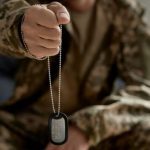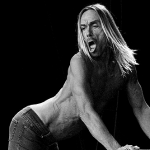 Technology
Technology  Technology
Technology  Humans
Humans 10 Everyday Human Behaviors That Are Actually Survival Instincts
 Animals
Animals 10 Animals That Humiliated and Harmed Historical Leaders
 History
History 10 Most Influential Protests in Modern History
 Creepy
Creepy 10 More Representations of Death from Myth, Legend, and Folktale
 Technology
Technology 10 Scientific Breakthroughs of 2025 That’ll Change Everything
 Our World
Our World 10 Ways Icelandic Culture Makes Other Countries Look Boring
 Misconceptions
Misconceptions 10 Common Misconceptions About the Victorian Era
 Mysteries
Mysteries 10 Strange Unexplained Mysteries of 2025
 Miscellaneous
Miscellaneous 10 of History’s Most Bell-Ringing Finishing Moves
 Technology
Technology Top 10 Everyday Tech Buzzwords That Hide a Darker Past
 Humans
Humans 10 Everyday Human Behaviors That Are Actually Survival Instincts
 Animals
Animals 10 Animals That Humiliated and Harmed Historical Leaders
Who's Behind Listverse?

Jamie Frater
Head Editor
Jamie founded Listverse due to an insatiable desire to share fascinating, obscure, and bizarre facts. He has been a guest speaker on numerous national radio and television stations and is a five time published author.
More About Us History
History 10 Most Influential Protests in Modern History
 Creepy
Creepy 10 More Representations of Death from Myth, Legend, and Folktale
 Technology
Technology 10 Scientific Breakthroughs of 2025 That’ll Change Everything
 Our World
Our World 10 Ways Icelandic Culture Makes Other Countries Look Boring
 Misconceptions
Misconceptions 10 Common Misconceptions About the Victorian Era
 Mysteries
Mysteries 10 Strange Unexplained Mysteries of 2025
 Miscellaneous
Miscellaneous 10 of History’s Most Bell-Ringing Finishing Moves
10 Bands That Originally Had Terrible Names
Choosing a name is a fairly important part of starting a band. Ideally, the name should give listeners a sense of the group before they’ve even heard any music. While some bands manage to choose the perfect name right away, others try out a few options before finding one that sticks. Here are 10 bands that not only fall into the latter category, but originally chose an absolutely terrible name.
Related: 10 Bands That Truly Lived a Punk Lifestyle
10 The Cranberries
At the start of 1990, a band called The Cranberry Saw Us released a demo EP titled Anything. Their name was a deliberate joke, sounding like “The Cranberry Sauce” if said quickly. Vocalist Niall Quinn left shortly afterward to join another band, and Dolores O’Riordan took his place.
With O’Riordan as the frontwoman, The Cranberry Saw Us recorded two more EPs: Nothing Left at All and Water Circle. The name change came about by accident when one of their demo tapes was sent back to them from a record company addressed to “The Cranberries.” For whatever reason (possibly because it was less confusing), they decided to stick with the mistake, and by the time they released their official debut single, “Dreams” (1992), they were known to the world as The Cranberries.[1]
9 Nickelback
When Nickelback were getting started in the 1990s, they went by the name Village Idiot. In a 2017 interview, guitarist Ryan Peake explained, “Our small town [Hanna, Alberta] was almost a village size, so I thought it was appropriate.” In reference to being Village Idiot rather than Village Idiots, bassist Mike Kroeger joked that “collectively we make one idiot.”
Village Idiot would play covers—often of Canadian bands such as The Tragically Hip and The Watchmen—in college bars. By the time they were releasing their own music—starting with the 1996 EP Hesher—they had ditched the self-deprecating name for Nickelback, which was inspired by Mike’s job in a coffee shop. When handing over change to customers, he would often say, “Here’s your nickel back.”[2]
8 Red Hot Chili Peppers
The Red Hot Chili Peppers performed their first songs—including “Out in L.A.”—under the long and alliterative name Tony Flow and the Miraculously Majestic Masters of Mayhem. They were asked by their friend Gary Allen to open the release party for his debut EP In White America at the Grandia Room on December 16, 1982. A couple of weeks later, the band was asked to play another show at the venue, although this time, they shortened their name to just The Flow.
In his autobiography, singer Anthony Kiedis explained that it was after that second show that they decided to commit themselves to the band, and that meant picking a better name. “We started going through these huge laundry lists of idiotic, meaningless, boring names,” he wrote. They eventually landed on Red Hot Chili Peppers, with both bassist Flea and saxophonist Keith Barry taking credit. “It’s a derivation of a classic old-school American blues or jazz name. There was Louis Armstrong with his Hot Five, and also other bands that had ‘Red Hot’ this or ‘Chilli’ that,” Kiedis explained.[3]
7 Sugar Ray
Sugar Ray used to go by the not particularly cool name Shrinky Dinx. After spending a few years playing gigs in Southern California, in 1994 they filmed their own music video—shot by McG—for “Caboose.” Not only did the video get them signed to Atlantic Records (and the song appeared on their first album Lemonade and Brownies), but it also launched the career of McG, who went on to shoot videos for The Offspring’s “Pretty Fly (For a White Guy)” and Smash Mouth’s “All Star,” before getting into film directing with Charlie’s Angels (2000).
After being signed, Shrinky Dinx were threatened with a lawsuit from Milton Bradley—the Shrinky Dinks toy copyright owner. They decided to rename themselves after boxer Sugar Ray Leonard, not Sugar Ray Robinson, as is sometimes thought. “He was the fighter that we were more aware of,” singer Mark McGrath explained. “We chose it because it was a piece of Americana like Ford cars and 7-Up. You have to look at the name as a representation of America as a whole—the good, positive part of America.”[4]
6 New Kids on the Block
When producer Maurice Starr was putting together a boy band in the 1980s, he decided to call them Nynuk (pronounced “na-nook” like the 1922 movie Nanook of the North). The nonsensical word was possibly a riff on the name of the popular Puerto Rican boy band Menudo, which means loose change.
In a 2024 interview on The Kelly Clarkson Show, band member Donnie Wahlberg explained that “we all hated the name Nynuk right, and no one could pronounce it.” Wahlberg had written a song called “New Kids on the Block” when he was a teenager, and the members thought the title would make a great band name. They suggested the name to Starr, and thankfully, he conceded.[5]
5 Creedence Clearwater Revival
Creedence Clearwater Revival started out in 1959 under the name The Blue Velvets. They released a few singles that didn’t perform very well but caught the attention of Fantasy Records owner Max Weiss, who signed them in 1964. Weiss wanted to rename them and didn’t like their suggestion of The Visions. Hoping to capitalize on the recent chart success of British bands, Weiss called them The Golliwogs—a character and toy that is a racist caricature of Black people.
“I think, at least to Max anyway, ‘Golliwogs’ sounded sort of British,” said guitarist Tom Fogerty. “We always hated the name—still do—but Max owned the label and we were new and wanted very much to make records, so we went along with things.” For a few years, the band unsuccessfully released music as The Golliwogs—and were sometimes even forced to wear fuzzy white afro wigs.
In 1967, Saul Zaentz took over Fantasy and let the band pick their own name; they chose Creedence Clearwater Revival. “Creedence” was a friend’s name, “Clearwater” came from a brewing company’s ad campaign, and “Revival” signified optimism for their future. Their optimism was well-placed; in 1968, they finally found success with singles such as “Susie Q” and “I Put a Spell on You.”[6]
4 Pink Floyd
Before Pink Floyd became Pink Floyd, they considered a few other names, including Sigma 6, The Meggadeaths, and The Screaming Abdabs. But the name they settled on was the least cool of the bunch: The Tea Set. This was the name the group was using when they recorded their first songs—including “Lucy Leave” and “Double O Bo”—in 1965.
The Tea Set had no intention of changing their name until they showed up for a gig on an RAF base in 1965 and saw another band with that name on the bill. They had to come up with something new on the fly. Frontman Syd Barrett combined the names of two blues musicians in his record collection—Pink Anderson and Floyd Council—and added “Sound” to the end to create The Pink Floyd Sound.
They decided to drop the first and last words of the name not long afterward, and then, further down the line, Barrett himself made an exit from the band.[7]
3 Black Sabbath
Although now known as a metal band, Black Sabbath started out—in 1968—as a heavy blues band called The Polka Tulk Blues Band. Singer Ozzy Osbourne came up with the name while sitting on the toilet and looking at a tin of talcum powder on a shelf. The brand was Polka Tulk, and because no one could come up with a better name, they went with it.
It wasn’t long until guitarist Tony Iommi said they needed a new name, though. “Every time I hear it, all I can picture is you, with your trousers around your ankles, taking a fucking dump,” he told Osbourne. They switched to drummer Bill Ward’s suggestion of Earth, but after a booking mix-up, they discovered that there was already a pop and Motown band called Earth.
It was in 1969 that the band finally landed on their iconic moniker. A cinema across the street from their rehearsal space was screening Black Sabbath (1963), an anthology horror flick starring Boris Karloff. The movie’s cool title became both their band name and the name of a song on their debut album.[8]
2 Creed
Creed were formed in 1994, and for their first show—at Yianni’s in Tallahassee—they were known as Naked Toddler. In his autobiography, vocalist Scott Stapp said that the awful name was guitarist Mark Tremonti’s idea: “One night when we were jamming, Mark pulled a newspaper clipping out of his wallet that said something about the abduction of a ‘naked toddler.’” Tremonti thought it was a great band name, and although the others thought it was a joke, they agreed to use it for their first show to avoid conflict.
“The name didn’t go over well,” Stapp explained. “Girls hated it and said it made them think of pedophilia.” They agreed to ditch Naked Toddler and ended up going with Creed, a shortened version of bassist Brian Marshall’s previous band, Mattox Creed. Stapp said that the name had nothing to do with religion; it simply meant “something you believe in. I believe in the four of us. I believe in this band.”[9]
1 Nirvana
Nirvana tested out many different names at the start of their career—many of which were terrible. At the end of 1985, they performed a show under the name Fecal Matter. Over the next few years they tried out various different names for short stints, including Brown Towel, Stiff Woodies, Skid Row, and Pen Cap Chew.
The first time they definitely went by Nirvana was on March 19, 1988, for a show at the Community World Theater in Tacoma, Washington. Frontman Kurt Cobain designed the flyer for the gig, and he also included some of the band’s previous names (possibly to clear up any confusion over who they were): “Also known as… Skid Row, Ted Ed Fred, Pen Cap Chew, Bliss.”
As for why they settled on Nirvana, Cobain said he “wanted a name that was kind of beautiful or nice and pretty instead of a mean, raunchy punk name.” One of their former names did work its way into their history in a different way, though: the song “Pen Cap Chew” was recorded at their first studio session in 1988 and was eventually released on the 2004 album With the Lights Out.[10]








